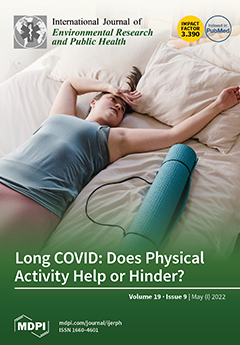Introduction: Training in hand hygiene for health care workers is essential to reduce hospital-acquired infections. Unfortunately, training in this competency may be perceived as tedious, time-consuming, and expendable. In preceding studies, our working group detected overconfidence effects in the self-assessment of hand hygiene
[...] Read more.
Introduction: Training in hand hygiene for health care workers is essential to reduce hospital-acquired infections. Unfortunately, training in this competency may be perceived as tedious, time-consuming, and expendable. In preceding studies, our working group detected overconfidence effects in the self-assessment of hand hygiene competencies. Overconfidence is the belief of being better than others (overplacement) or being better than tests reveal (overestimation). The belief that members of their profession are better than other professionals is attributable to the clinical tribalism phenomenon. The study aimed to assess the correlation of overconfidence effects on hand hygiene and their association with four motivational dimensions (intrinsic, identified, external, and amotivation) to attend hand hygiene training.
Methods: We conducted an open online convenience sampling survey with 103 health care professionals (physicians, nurses, and paramedics) in German, combining previously validated questionnaires for (a) overconfidence in hand hygiene and (b) learning motivation assessments. Statistics included parametric, nonparametric, and cluster analyses.
Results: We detected a quadratic, u-shaped correlation between learning motivation and the assessments of one’s own and others’ competencies. The results of the quadratic regressions with overplacement and its quadratic term as predictors indicated that the model explained 7% of the variance of amotivation (
R2 = 0.07;
F(2, 100) = 3.94;
p = 0.02). Similarly, the quadratic model of clinical tribalism for nurses in comparison to physicians and its quadratic term explained 18% of the variance of amotivation (
R2 = 0.18;
F(2, 48) = 5.30;
p = 0.01). Cluster analysis revealed three distinct groups of participants: (1) “experts” (
n1 = 43) with excellent knowledge and justifiable confidence in their proficiencies but still motivated for ongoing training, and (2) “recruitables” (
n2 = 43) who are less competent with mild overconfidence and higher motivation to attend training, and (3) “unawares” (
n3 = 17) being highly overconfident, incompetent (especially in assessing risks for incorrect and omitted hand hygiene), and lacking motivation for training.
Discussion: We were able to show that a highly rated self-assessment, which was justified (confident) or unjustified (overconfident), does not necessarily correlate with a low motivation to learn. However, the expert’s learning motivation stayed high. Overconfident persons could be divided into two groups: motivated for training (recruitable) or not (unaware). These findings are consistent with prior studies on overconfidence in medical and non-medical contexts. Regarding the study’s limitations (sample size and convenience sampling), our findings indicate a need for further research in the closed populations of health care providers on training motivation in hand hygiene.
Full article





